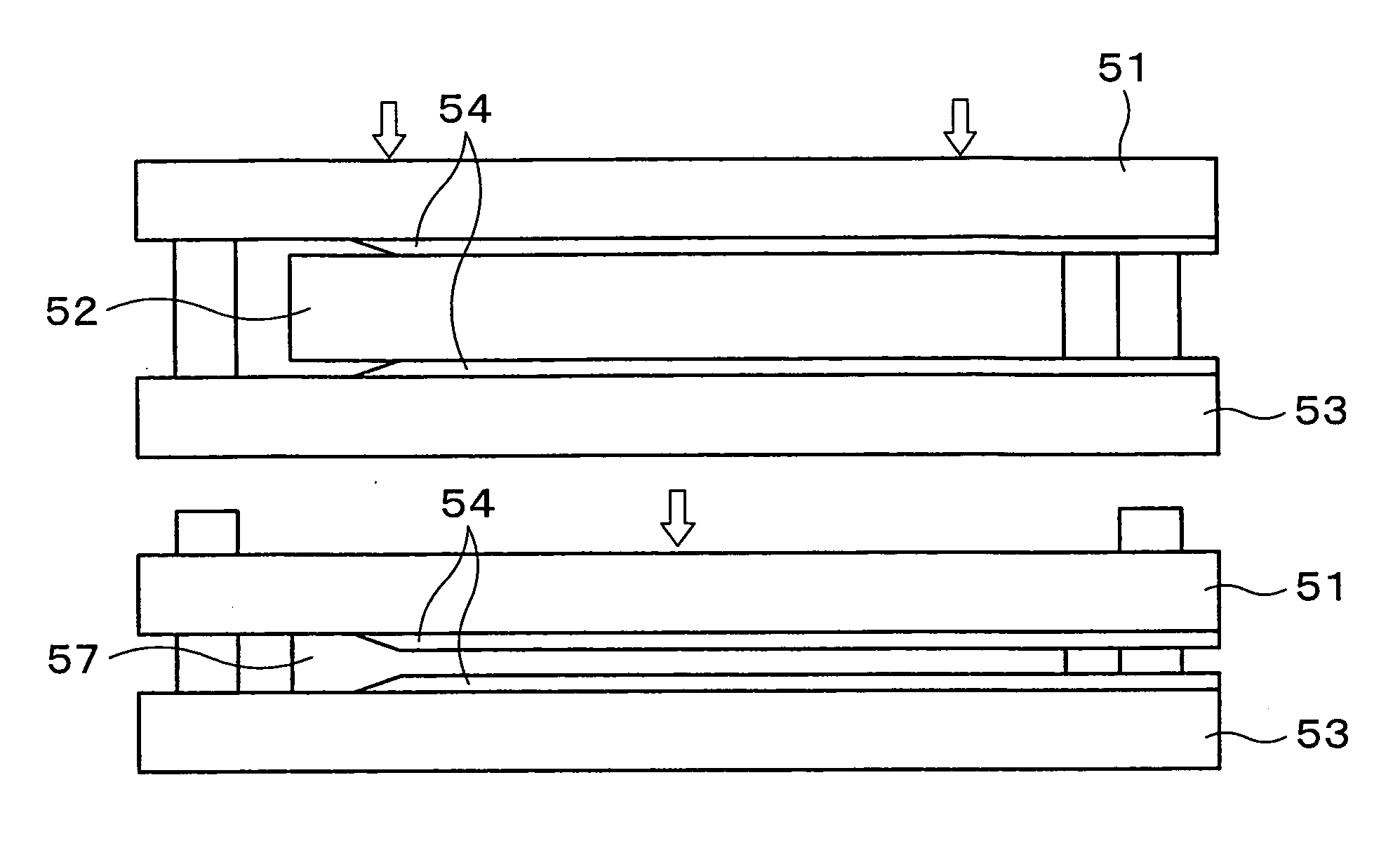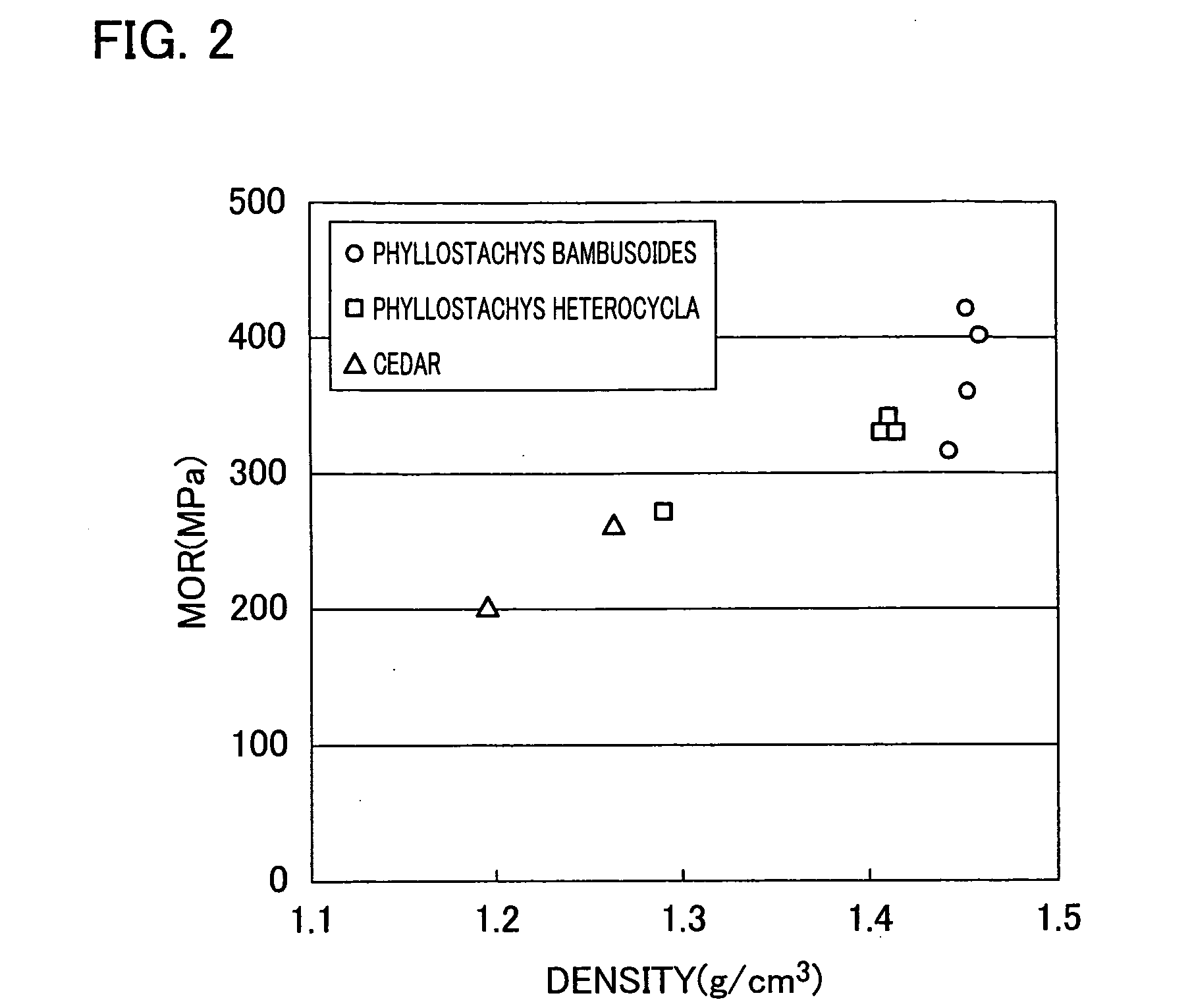Wooden nail-like connector, compressed bamboo material, and method of manufacturing the connector and the material
- Summary
- Abstract
- Description
- Claims
- Application Information
AI Technical Summary
Benefits of technology
Problems solved by technology
Method used
Image
Examples
example
[0104] [Hammering Test for Non-Compressed Bamboo Nail (Comparative Experiment)]
[0105] A 4 mm rectangular column was cut out from an unprocessed bamboo piece, and from this rectangular column, bamboo nails were made by forming a nail-point shape (diamond point) through a cutting process. The bamboo nails were then hammered into cedar without pilot-holes being perforated beforehand. The bamboo nails were either 50 mm or 90 mm in length.
[0106] As a result; it was possible to hammer in some of the rectangular columns of 50 mm in length, the rectangular column being cut out from the external sheath side whose strength is high. Many of the bamboo nails however were damaged due to an impact in a lengthwise direction, and were cracked in a direction of their fiber. Further, with the bamboo nails of 90 mm in length, typical buckling failure was observed at center portions of the respective bamboo nails, when the bamboo nail was hammered into the cedar material by 30 mm. As a result, all of ...
PUM
 Login to View More
Login to View More Abstract
Description
Claims
Application Information
 Login to View More
Login to View More - R&D
- Intellectual Property
- Life Sciences
- Materials
- Tech Scout
- Unparalleled Data Quality
- Higher Quality Content
- 60% Fewer Hallucinations
Browse by: Latest US Patents, China's latest patents, Technical Efficacy Thesaurus, Application Domain, Technology Topic, Popular Technical Reports.
© 2025 PatSnap. All rights reserved.Legal|Privacy policy|Modern Slavery Act Transparency Statement|Sitemap|About US| Contact US: help@patsnap.com



